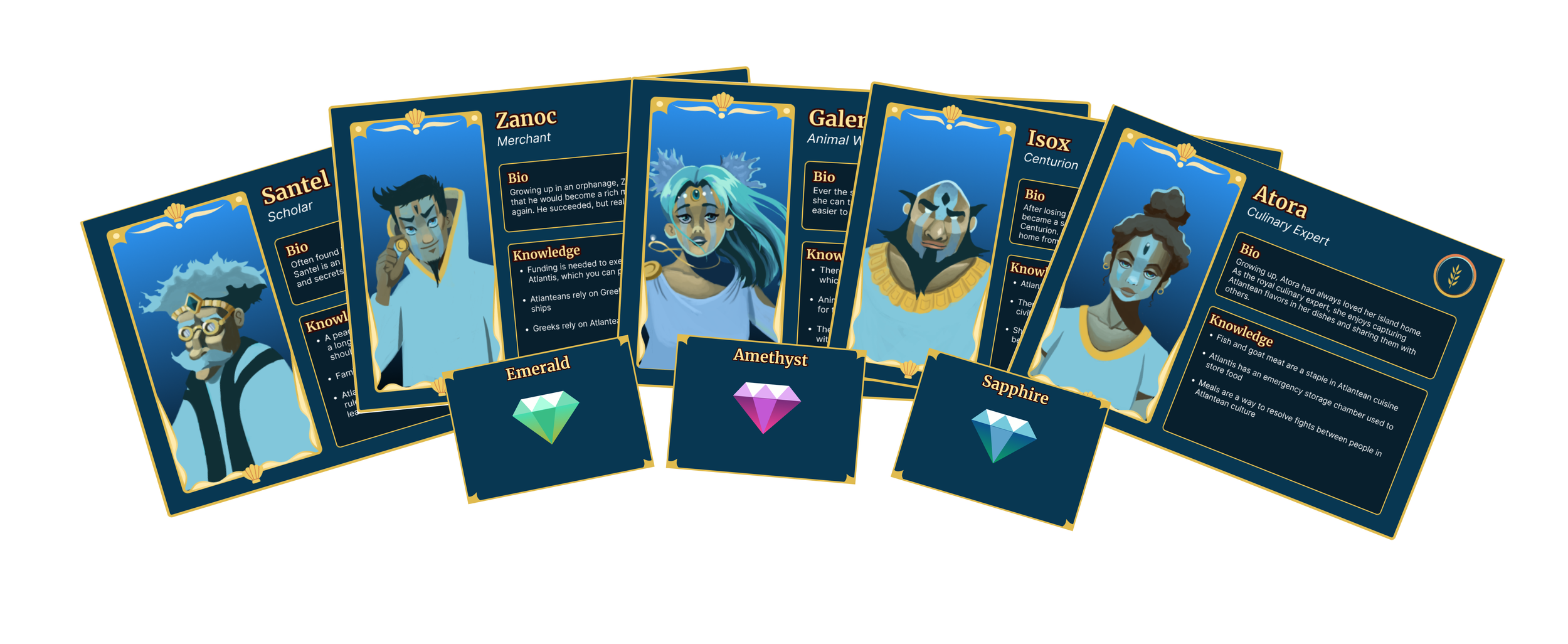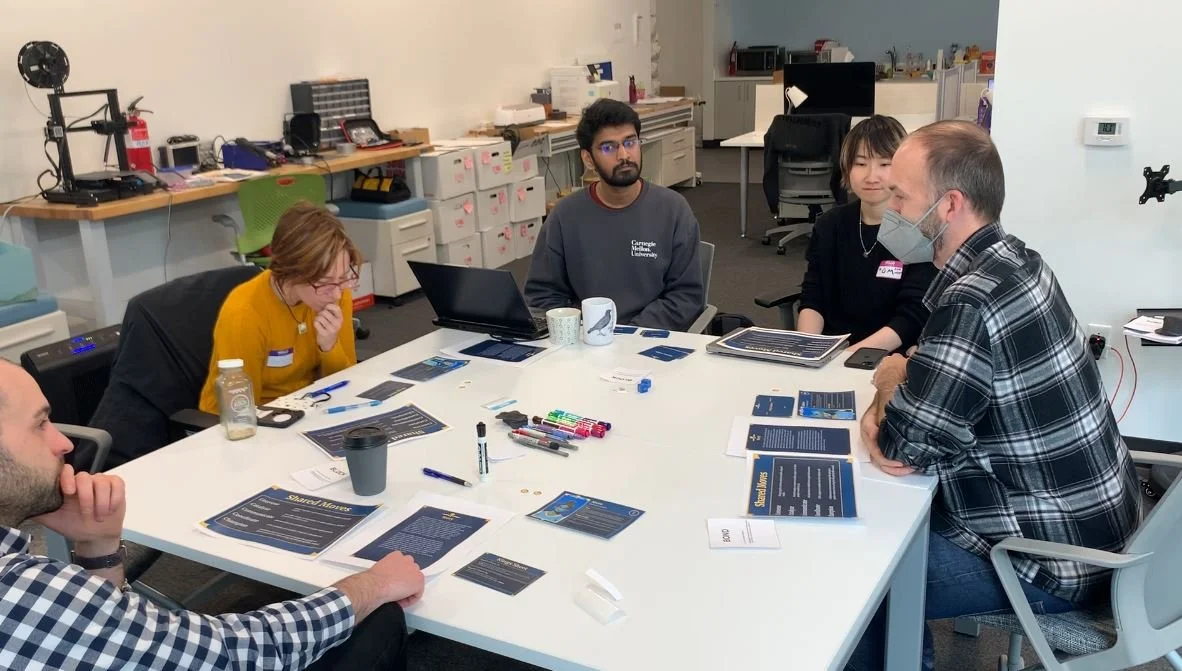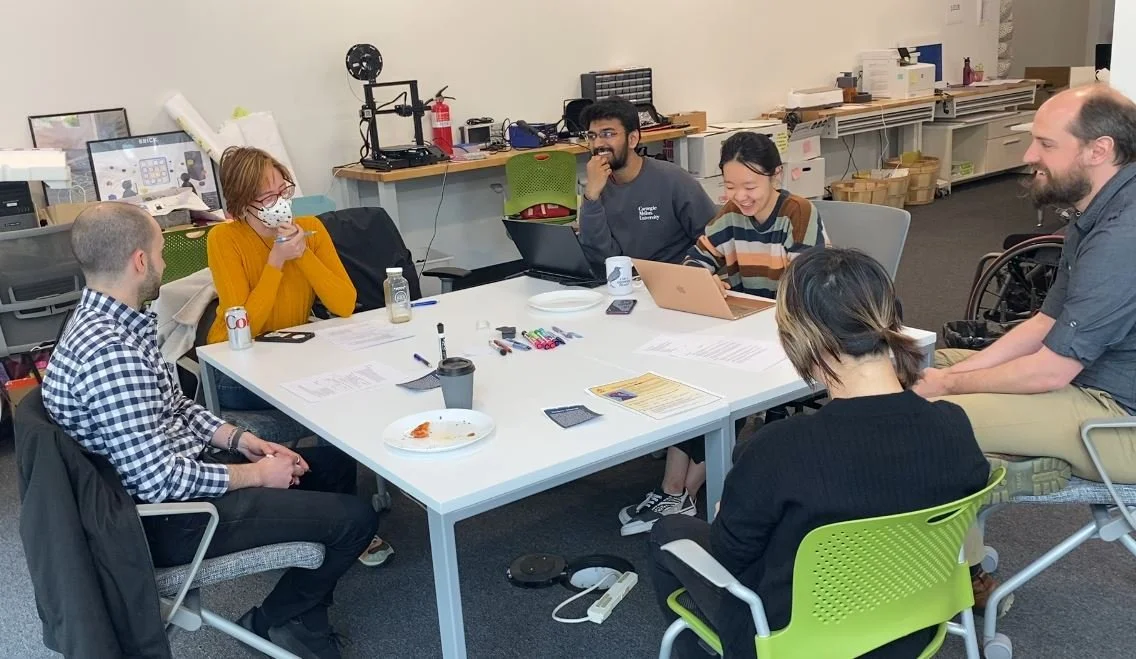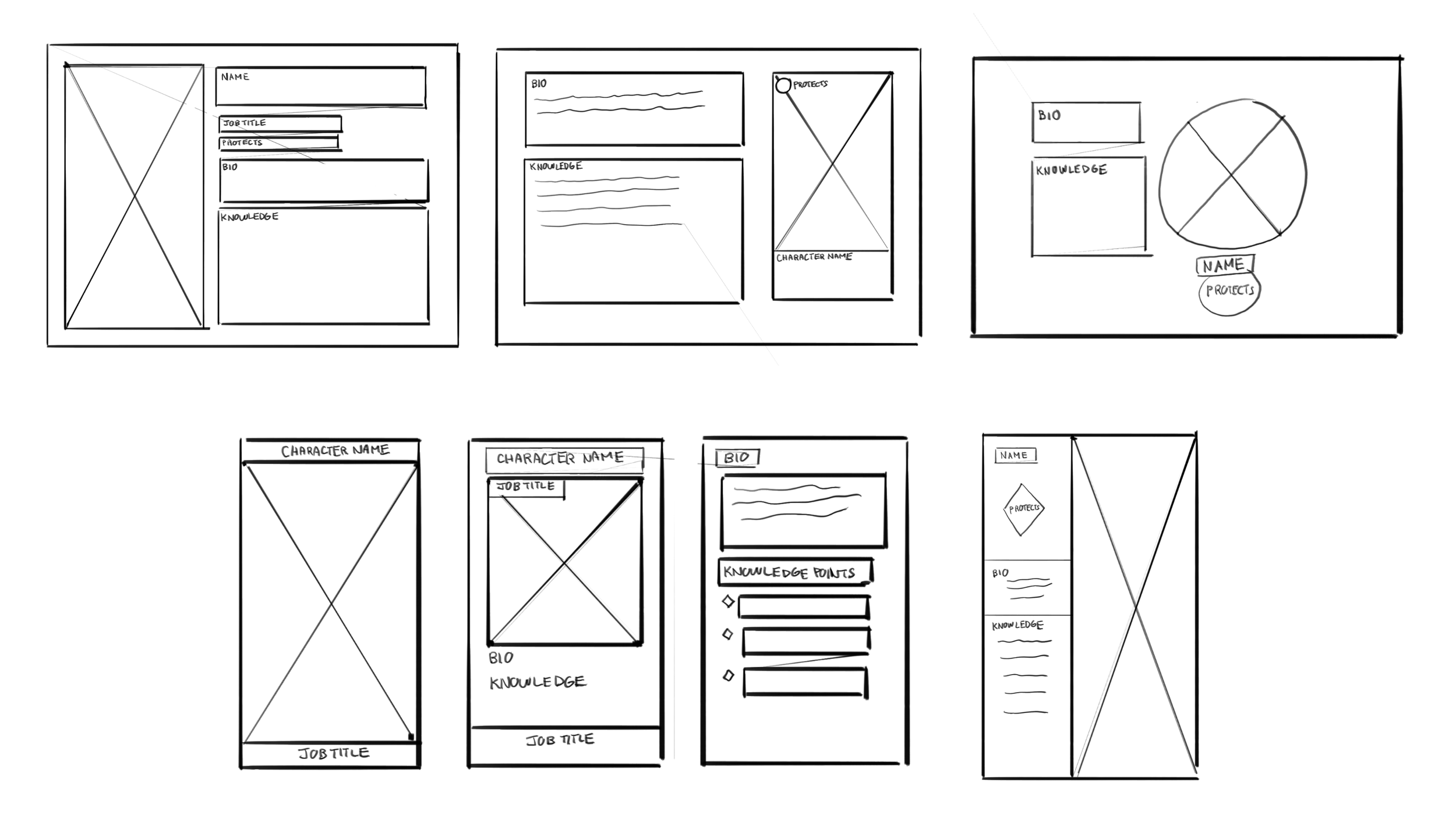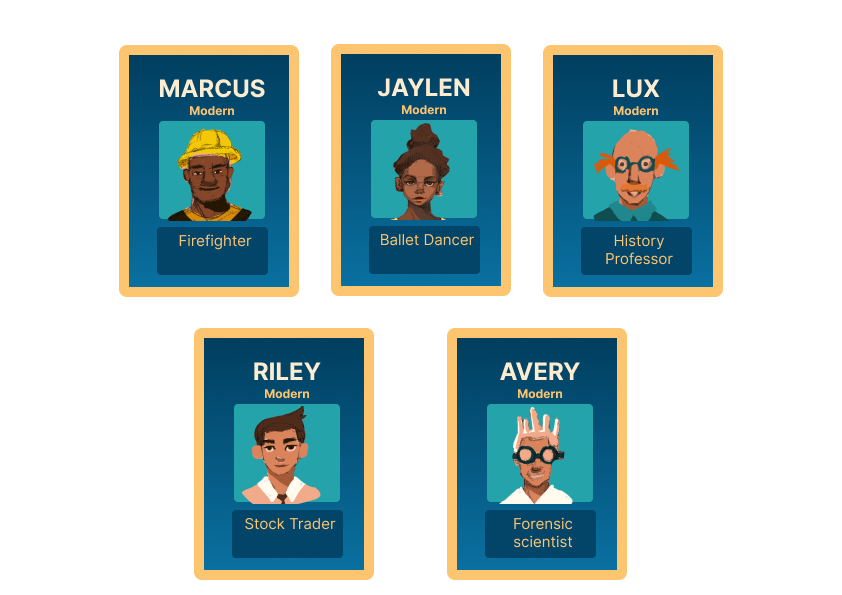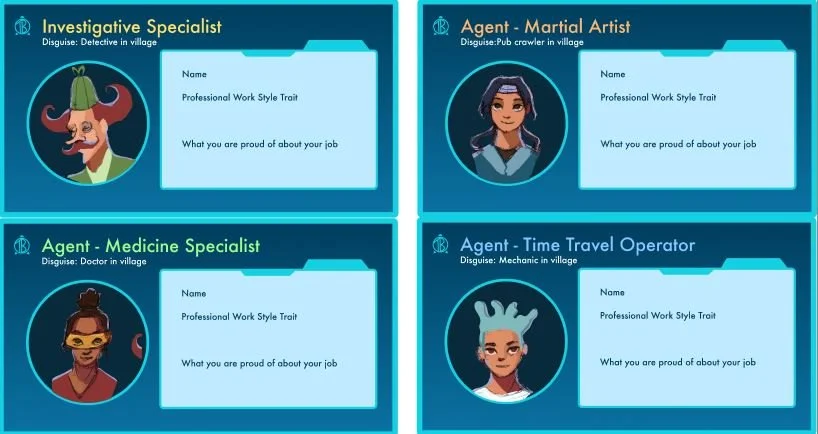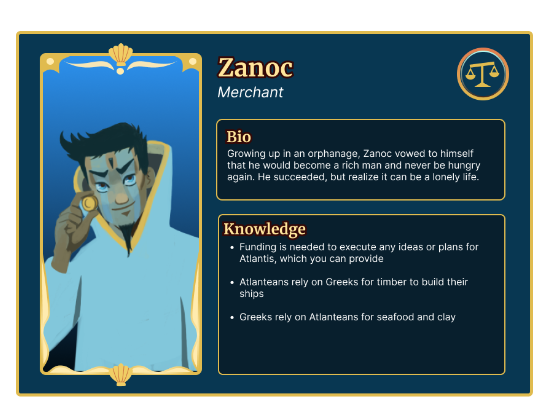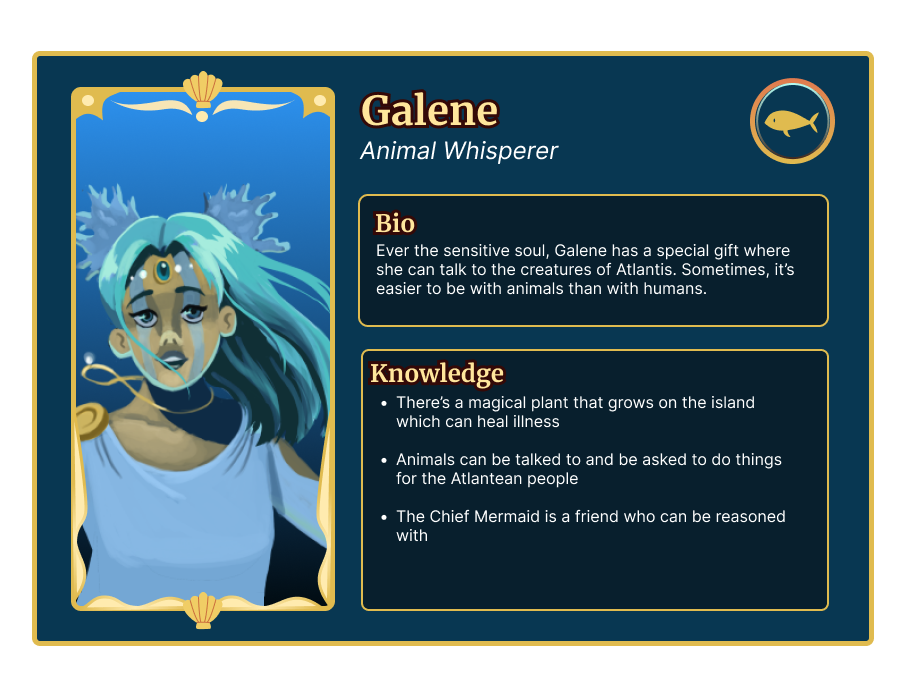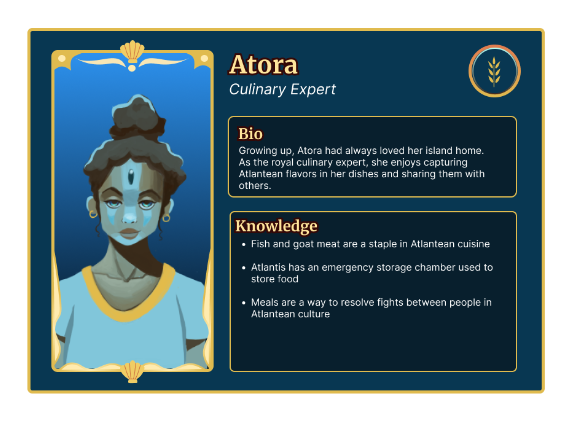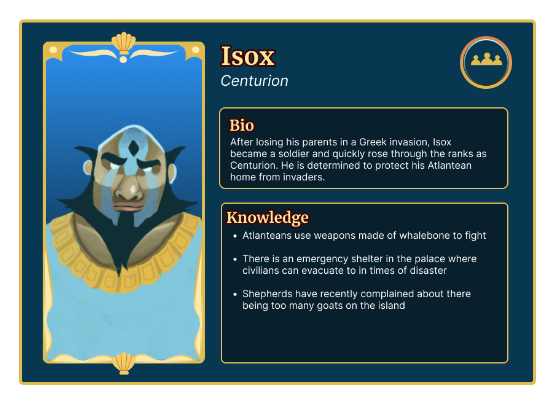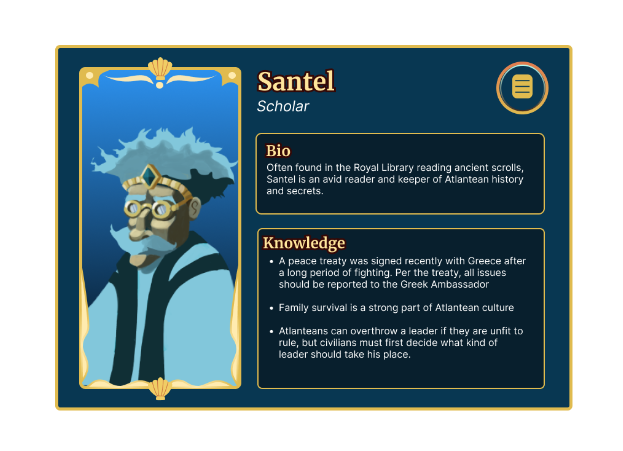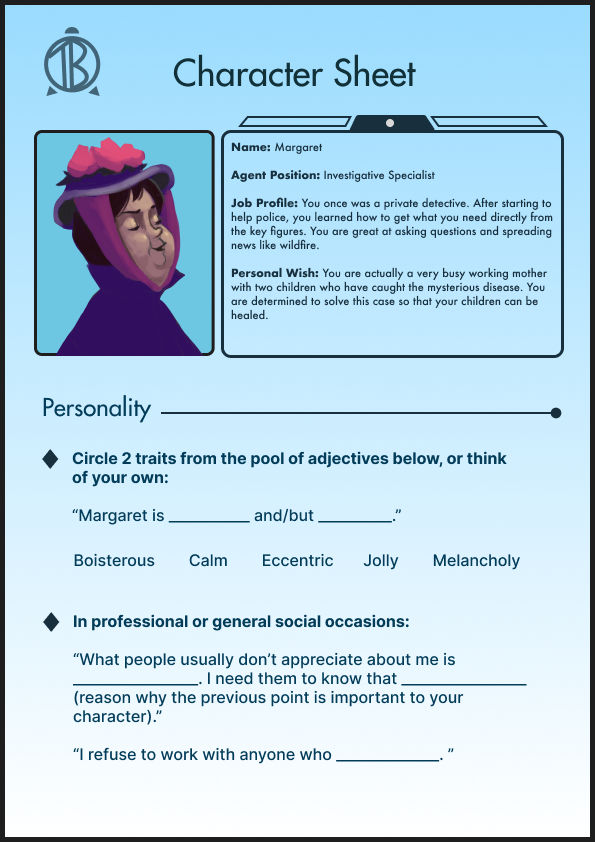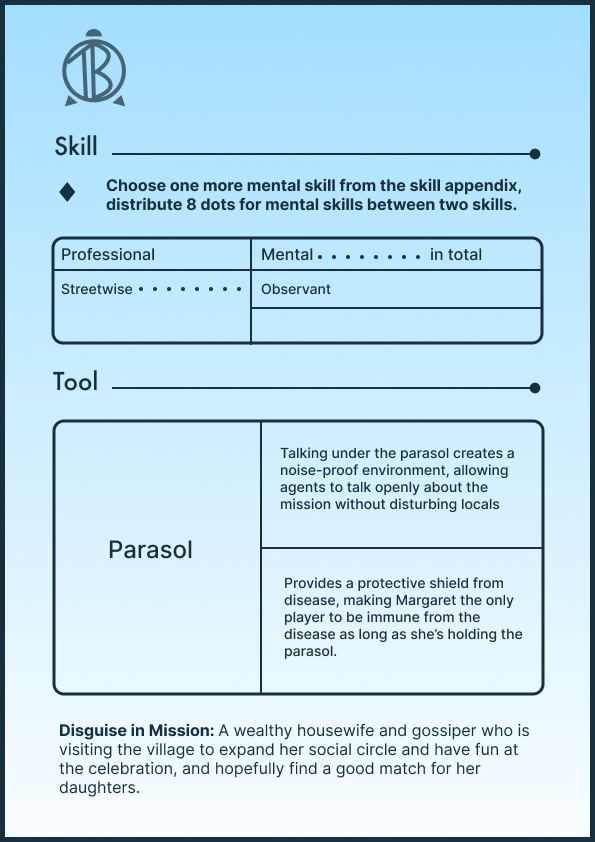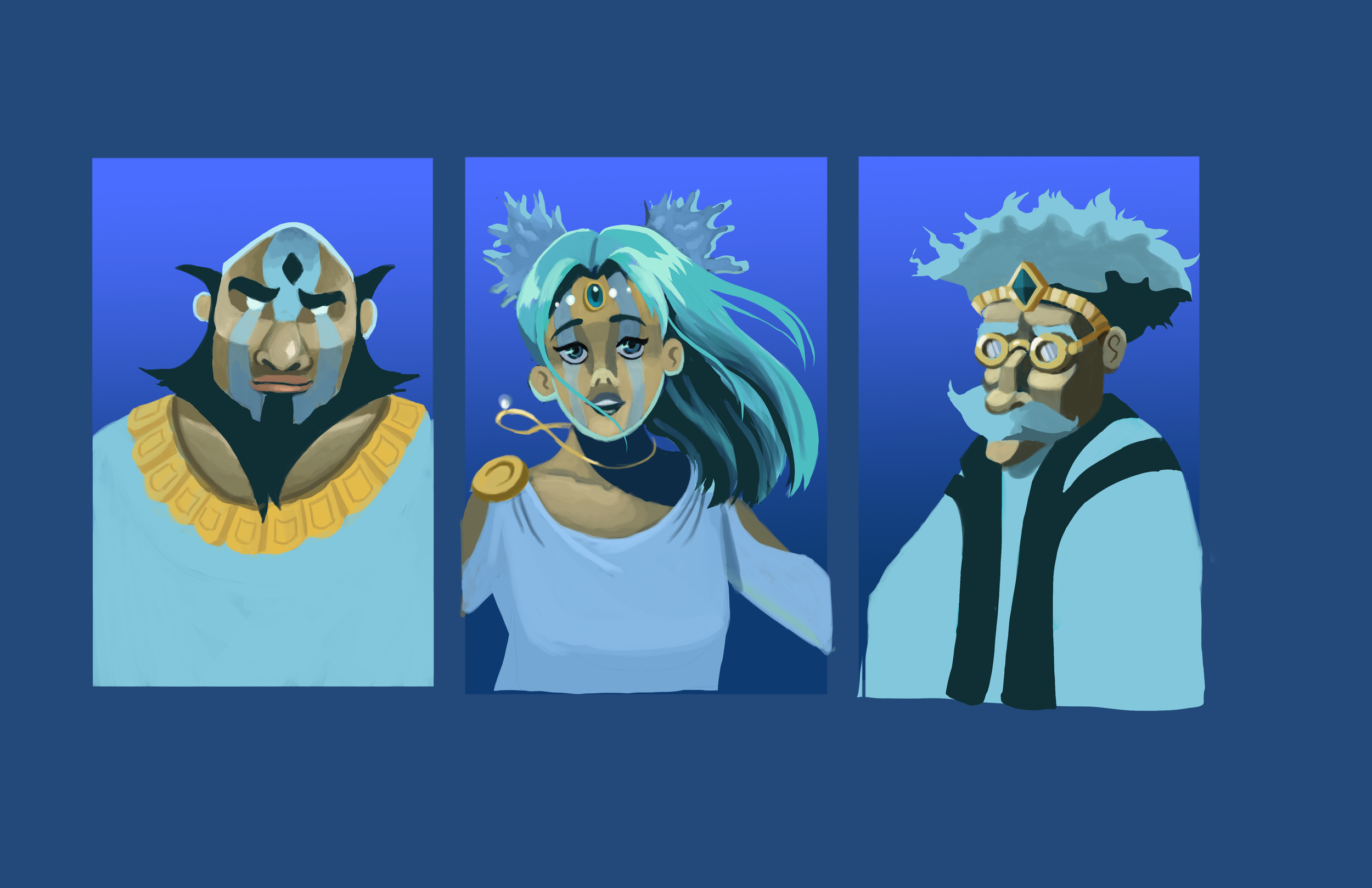
The Great Revival of Atlantis and Time Bureau
Project Overview
Timeline 3 months
Role Lead UX/UI Designer, Lead Game Artist
Team Jiaqi Zhang, Lanning Zhang, Varun Girdhar
Tools Figma, Photoshop
Attributions Thanks to Elaine Fath as Game Design Lead and Jessica Hammer as advisor
How might we help educators and administrators build trust through Live Action Roleplay (LARP)?
The Center of Transformational Play is partnering with Remake Learning to design a LARP that promotes interprofessional collaboration (IPC) among different stakeholders in education reform. The goal is to increase awareness of the value of IPC and to help education reformers implement "The 5 C's" utilized by Remake Learning (convene, catalyze, communicate, coordinate, and champion) to achieve this.
PROBLEMTeachers and administrators have trouble building trust when collaborating to meet student needs.
SOLUTIONUsing embodied experiences, we allow education stakeholders to explore a collaborative identity in a safe way.
KEY FEATURESCharacter sheets to let players embody different backstories, special knowledge, and relationship dynamics with other characters.
01
Individual and group missions to save humanity in order to increase collaborative activity during gameplay.
02
Player options to achieve tasks alone or in a team to achieve greater outcomes.
03
Playtest with educators for the Great Revival of AtlantisPlaytest with educators for the Great Revival of AtlantisDESIGNAcross 5 rounds of internal and external playtests, we created 12 concepts that had varying degrees of LARP mechanics and mechanics borrowed from other game genres. Using playtesting and expert feedback, we deepened team understanding of what makes LARPs unique and identified what was and wasn’t working about the LARP genre for our particular goals. We narrowed the prototypes down to 5 and then 2. Through making and showing the artifacts to experts and naive players, we discovered new constraints, goals, and focuses.
By the end of the semester, our team was able to produce 2 playable, tested prototypes and a refined set of design goals based on these prototypes and the literature behind them.
Low to Mid Fidelity Prototypes
We started off with simple character cards in our first iteration for both games. However, as we tested our prototype, we realized having too many cards swayed players to play a table top RPG game. So in our middle iterations, we went back to using character sheets with text to explore the possible LARP interactions in the game.
The Great Revival of Atlantis early iterationsTime Bureau early iterationsHigh Fidelity Prototype
Once we locked in the important aspects of both games, such as the character’s name, job title, biography and knowledge, we went back to visually iterating what the character card can look like. We realized in our iterations that the character sheet would be the most information heavy sheet, so this had the highest priority for visual fidelity.
I also designed the characters for the game, and made sure to unify their character with the UI elements, such as the border and and background color. Final playable prototype was polished in Figma and Adobe Photoshop CC.
Great Revival of Atlantis- High fidelity iterationTime Bureau- High fidelity iteration

